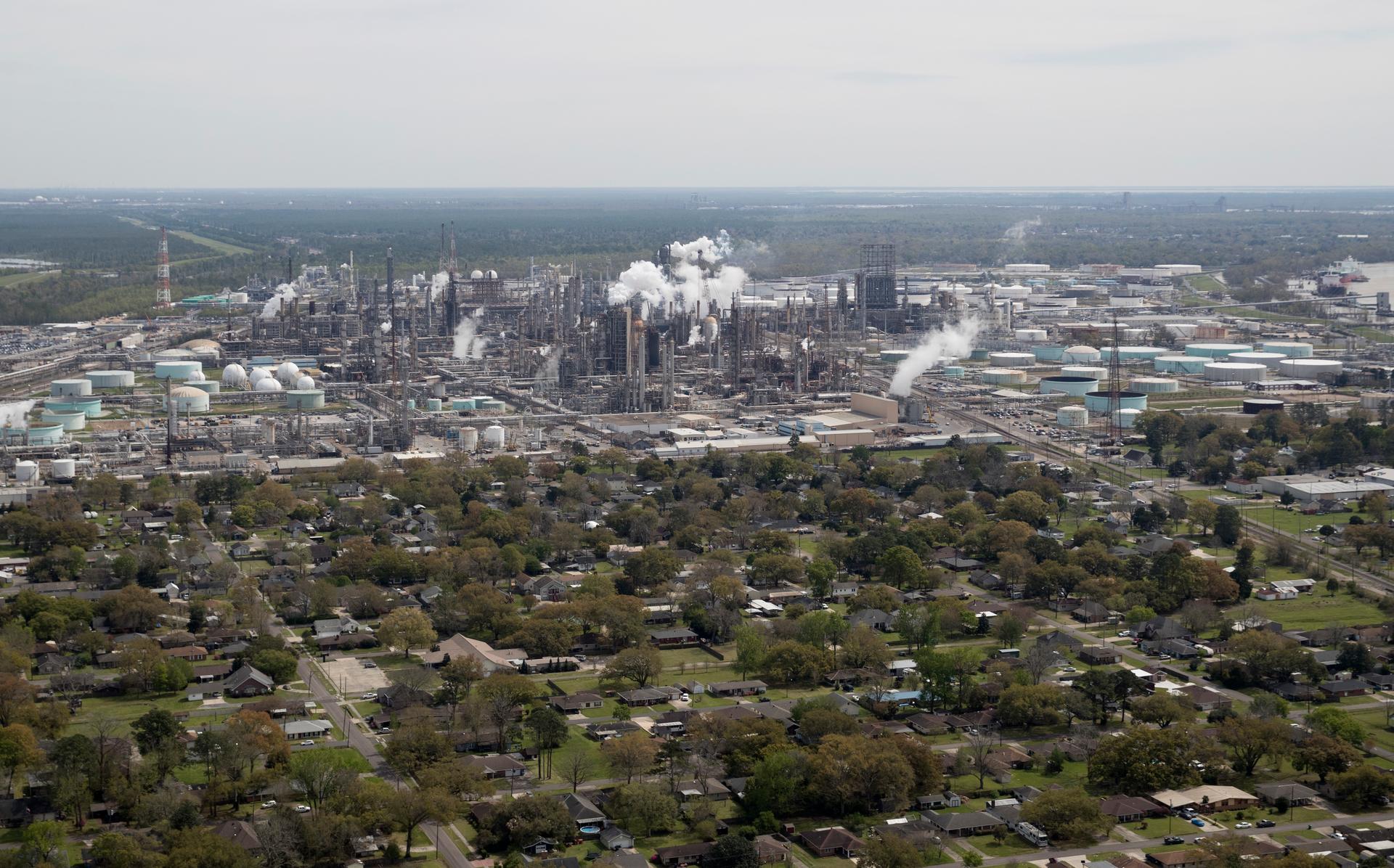A first-of-its-kind map and data analysis by the nonprofit investigative newsroom ProPublica has yielded new insights into how multiple sources of industrial carcinogens can add up to elevated cancer risks for numerous communities across the United States.
In some neighborhoods located near industrial areas, air pollution far exceeds levels considered acceptable by the Environmental Protection Agency. These air pollutants include carcinogens like benzene and ethylene oxide; and heavy metals like chromium, cobalt and nickel.
Until now, if a person wanted to know about the extra cancer risk they might face from living near these pollution sources, they were out of luck. Now, the mapping tool created by ProPublica allows anyone to view their cumulative cancer risk from major sources of toxic air pollution.
EPA normally assesses industrial cancer risk one type of facility at a time, which often underestimates the total estimated cancer risk because so many people live in close proximity to multiple types of facilities, says Lisa Song, a climate and energy reporter at ProPublica and part of the team that put together the analysis.
“We put this data together into a searchable map, so you can type in your home address or your work address, and it will zoom in to your exact place and show you, at a very localized level, the estimated additional cancer risk from these big industrial facilities in your area,” she explains “If you live in one of those places where you don’t have a facility nearby, it will tell you that the nearest facility is six miles away or 10 miles away or whatever the number is.”
Related: Fossil fuels cause 1 in 5 premature deaths worldwide, study says
The raw data for the mapping tool comes from the EPA, Song says. EPA collects the annual data that industries report to the agency about how many pounds of certain pollutants they emit every year and then runs its own air model to track where the emissions are going, geographically, and to estimate their concentrations.
Related: Air pollution is a silent killer, even when it meets EPA standards
EPA has had this raw data for many years, but the agency’s regulatory system is not set up to adequately account for the cumulative risk posed by exposure to multiple sources of pollution at once, Song says.
“The way the EPA assesses risk, they’re slicing and dicing the risk in a way that, for example, if you live near two refineries, they will look at the risk from both of those refineries together, but if you live next to a refinery and a chemical plant, then EPA is not going to be looking at the total risk from both of those facilities because they’re considered two different types of facilities,” Song explains. “That oversight is baked into the way that the EPA does its regulations right now.”
ProPublica’s analysis identified more than 1,000 hotspots around the country where industrial sources emit carcinogenic air pollution. Most of these hotspots are located in southern states.
The top hotspot on the map is a region known as Cancer Alley, in Louisiana, Song says. Texas is also home to several of the top hotspots. Many of these hotspots plan to add even more polluting facilities, such as ethane crackers. Song says ProPublica and others use a term to describe these areas: “sacrifice zones.”
EPA’s general threshold for cancer risk is in 1 in 10,000, but at the same time, EPA has an “aspirational goal” of minimizing the number of Americans who are exposed to industrial risk higher than 1 in a million.
Related: New WHO air pollution standards could save millions of lives each year
By this aspirational standard, about 74 million Americans live in places where the estimated risk is greater than 1 in a million, Song notes. About a quarter of million people live in places where the estimated cancer risk is 1 in 10,000 or greater — places like Cancer Alley and certain parts of Texas, for example.
ProPublica’s data also confirms decades of research showing that “pollution is segregated,” Song adds.
“Our national analysis showed that in census tracts that are mostly people of color, they experience about 40% more pollution than census tracts that are mostly white residents,” she explains. “And in mostly Black census tracts, they’re being exposed to more than double these pollutants than predominantly white census tracts.”
Related: For poor and minority children, excessive air pollution creates a toxic learning environment
ProPublica has published a guide for people who discover they are living in a pollution hotspot, Song adds. Among other things, the guide explains how organized communities in Cancer Alley, for example, have advocated for themselves through campaigns for regular air monitoring or by looking for funding to conduct their own independent air monitoring.
“Some communities have done things like worked with the facilities so that they’re all notified whenever the facility has some kind of unexpected accident,” Song says. “Other people have purchased air filters to use inside their homes to make the air a little bit safer indoors; and other communities even have worked with lawyers and filed lawsuits.”
“There are really a whole bunch of things that these types of communities have done, historically,” Song notes, “and we’re hoping that our guide can just help inform and perhaps empower people who are discovering they’re in hotspots for the first time.”
In the wake of this investigation, the EPA has announced several targeted actions and specific reforms, including monitoring and scrutiny of industrial polluters.
This article is based on an interview by Bobby Bascomb that aired on Living on Earth from PRX.
